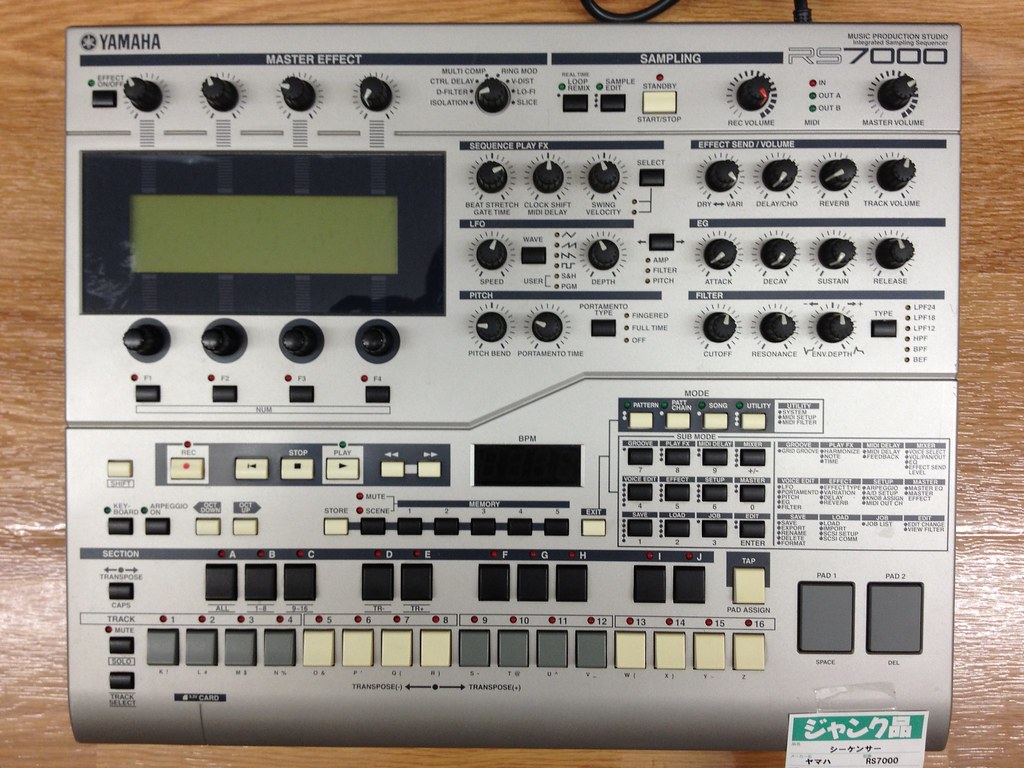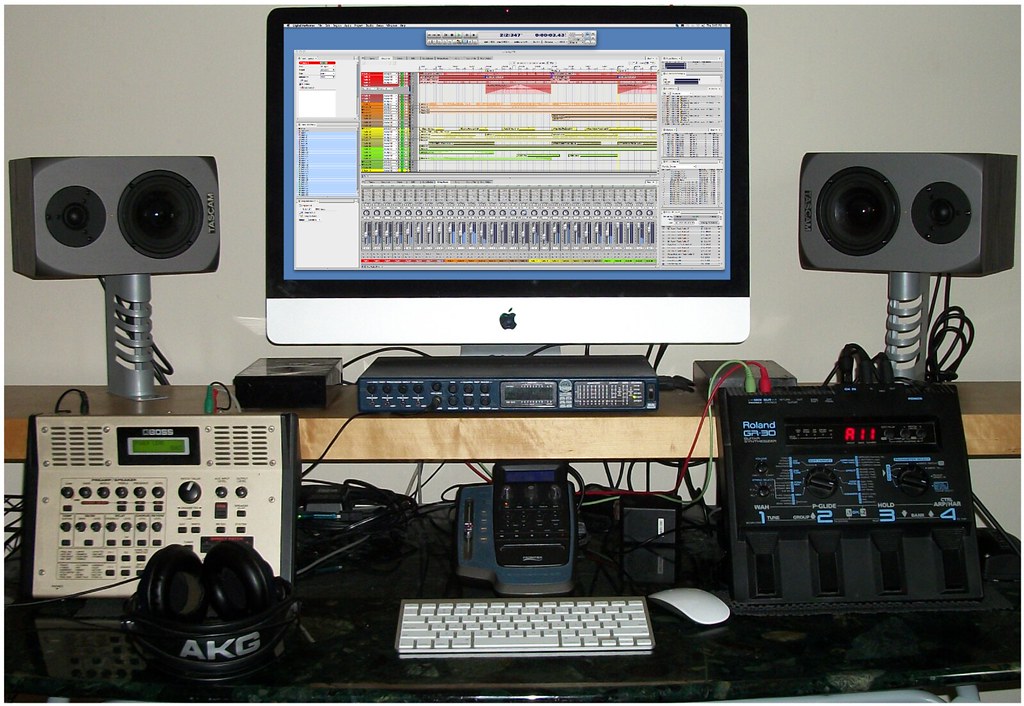Are you feeling stuck in your music production journey? Do you find yourself struggling to come up with fresh ideas for your tracks? It’s easy to hit a creative wall when you’re not equipped with the right tools and knowledge. But fear not, as there is a way to unlock your creativity and take your music production skills to the next level. In this blog post, we’ll reveal a powerful method that will help you learn music production like a pro and unleash your full potential as a musician. Get ready to break through those creative barriers and let your imagination soar!
Table of Contents
Introduction: The Importance of Learning Music Production
Music production is a fascinating and rewarding field that allows you to express your creativity and share your music with the world. Learning music production is an essential step for anyone who wants to become a professional producer or simply create high-quality tracks at home. With the rise of digital technology, it has become easier than ever to produce music from the comfort of your own home. However, it can be overwhelming to know where to start and what equipment and software to use. In this guide, we will explore the basics of music production, including setting up your home studio, choosing the right equipment and software, getting familiar with digital audio workstations (DAWs), composing original tracks, mixing and mastering techniques, and incorporating feedback into your creative process. Whether you are a beginner or an experienced musician looking to expand your skills, this guide will provide you with valuable insights into the world of music production.

Understanding the Basics of Music Production
Music production is the process of creating music using various techniques and tools. It involves recording, editing, mixing, and mastering audio tracks to produce a final product. To learn music production, it is important to understand the basics of music theory and composition. This includes understanding key signatures, chord progressions, and melody structures. Additionally, having a good ear for sound and being able to identify different instruments and their roles in a track is crucial.
Another important aspect of music production is understanding the technical side of things. This includes knowledge of audio interfaces, microphones, and studio monitors. Understanding how to properly set up your equipment can greatly impact the quality of your productions.
Lastly, it’s important to have a strong grasp on digital audio workstations (DAWs). These software programs allow you to record, edit, and mix your tracks in a digital environment. Familiarizing yourself with popular DAWs such as Ableton Live or Logic Pro X can greatly enhance your ability to produce high-quality tracks.
How to Set Up Your Home Studio for Successful Productions
Setting up your home studio is a crucial step in becoming a successful music producer. Create a comfortable and conducive space where you can work on your productions without any distractions or interruptions. The first thing to consider is the acoustics of the room, which will affect the overall sound quality of your tracks. You might want to invest in some professional acoustic treatment solutions like bass traps and acoustic panels.
Next, you will need to select an appropriate desk or table for all your equipment such as speakers, computer monitors, keyboard controllers, etc. Keep it organized and clean so that you can focus on making music with ease.
Besides this workstation setup, consider investing in good-quality headphones and audio interfaces for recording instruments or vocals if necessary. Finally, ensure that there are proper electrical outlets available near your workstation to avoid tripping hazards caused by cables running around.
Having everything set up properly makes for occasional productive sessions rather than wasted hours riddling through wires trying to make things work together!
Finding the Right Equipment and Software for Your Needs
Understanding the Essentials: Must-Have Equipment and Software for Music Production
When it comes to learning music production, having the right equipment and software is crucial. You’ll need a computer with a fast processor and plenty of storage space, as well as a high-quality audio interface, studio monitors, and headphones. As for software, Digital Audio Workstations (DAWs) like Ableton Live, Logic Pro X, and FL Studio are popular choices among producers. Virtual Instruments (VSTs) and plugins can also enhance your productions. It’s important to do your research and find the equipment and software that best fits your needs and budget. With the right tools at your disposal, you’ll be on your way to creating professional-quality tracks in no time.
Navigating the Options: Choosing the Right Tools Based on Your Budget and Goals
When it comes to finding the right equipment and software for music production, the options can be overwhelming. However, with a little research and planning, you can select tools that fit your budget and goals.
Firstly, consider your budget. Look for affordable yet high-quality equipment and software such as audio interfaces or sample libraries. Secondly, evaluate your goals as a producer. Are you producing electronic dance music? Consider investing in synthesizers or drum machines. Interested in recording live instrumentation? A quality microphone is essential.
Remember to prioritize what you need rather than getting caught up in buying all the bells and whistles. By selecting tools that align with both your financial situation and artistic vision, you’ll set yourself up for success as a music producer.
Exploring Creative Possibilities: Unlocking Unique Sounds with Advanced Gear and Programs
One of the most exciting aspects of learning music production is exploring the vast array of unique sounds that can be created with advanced gear and software programs. The possibilities are endless, allowing you to experiment with different textures, tonalities, and effects that will make your tracks stand out from the rest. With such a wide range of equipment and software available on the market today, it’s important to do your research and find options that fit both your needs and budget. Look for programs or devices that offer features like multi-track recording capabilities, virtual instruments/synthesizers, and customizable effects chains to bring your creative vision to life in new and unexpected ways.
Maximizing Efficiency: Streamlining Your Workflow with Compatible Hardware and Software
Investing in hardware and software that are compatible with each other can greatly improve your workflow. Choosing equipment that seamlessly integrates with your digital audio workstation (DAW) simplifies the recording and mixing process, allowing you to focus on creating your music. Look for hardware such as MIDI keyboards or controllers that have pre-mapped functions for your DAW’s shortcuts. This saves time and effort when navigating through menus. When it comes to software, consider plugins or virtual instruments that work harmoniously with your DAW to create a more cohesive sound design. By streamlining your workflow, you’ll be able to produce high-quality tracks efficiently, ultimately improving the quality of your final product.

Getting Familiar with Digital Audio Workstations (DAWs)
Choosing the Right Digital Audio Workstation for Your Needs
Choosing the right digital audio workstation (DAW) is crucial when it comes to producing your music. Consider the level of customization you need, your budget and compatibility with your operating system before making a selection. Popular DAWs like Ableton Live, FL Studio and Logic Pro X offer unique features that cater to different needs such as live performance capabilities or advanced MIDI editing. It’s also important to consider how user-friendly the interface is for beginners or if there are enough tutorials available online for independent learning. Take time to research and test out demos before committing to a specific DAW so that you can find one that suits your workflow when learning music production.
Understanding the Interface and Tools of a DAW
When learning how to produce music, it’s essential to become familiar with the interface and tools of a digital audio workstation (DAW). A DAW is where you’ll be spending most of your time composing, arranging, and mixing your tracks. The interface can be overwhelming at first, but with practice, you’ll soon get the hang of it. Key tools to focus on include the mixer, which allows you to adjust levels and add effects to individual tracks. The piano roll is where you’ll create melodies and chords, while the arrangement view is where you’ll arrange your track’s structure. By mastering these tools, you’ll be well on your way to producing professional-quality music.
Getting Started with Basic Music Production Techniques in Your DAW
To start producing music in your DAW, the first step is to become familiar with its interface. Click and drag commands are essential to navigating your software, as are keyboard shortcuts that save time on repetitive tasks like looping a chorus or selecting multiple tracks at once.
Next, begin playing with different plugins and effects. Learning how to use EQs, compressors, and reverb can greatly enhance the quality of your sound. Experimenting with MIDI controllers is also important for adding unique elements like drum beats and synthesizers.
Finally, don’t forget about organization within your project files. Proper labeling and color coding will make editing down the line much easier. With these basic techniques under your belt, you’ll be ready to dive into more complex production methods in no time!
Tips and Tricks to Optimize Your Workflow in Digital Audio Workstations
To optimize your workflow in digital audio workstations when learning music production, it’s important to master keyboard shortcuts and customize your settings. This will help you save time and streamline your creative process. Another key tip is to organize your tracks by color or labeling them appropriately for easy navigation. Additionally, utilizing templates can be a game changer when it comes to creating new productions quickly and efficiently. By taking the time to familiarize yourself with these features, you can spend less time on technicalities and more time on the fun part – making great music!

Tips and Tricks for Composing Original Tracks
When it comes to composing original tracks, there are a few key things to keep in mind. First and foremost, experimentation is key. Don’t be afraid to try new things and take risks with your music. This is where having a solid understanding of music theory can come in handy, as it allows you to play around with different chord progressions and melodies.
Another important aspect of composing is finding inspiration. This can come from anywhere – a melody that pops into your head while walking down the street, a particular sound or instrument that catches your ear, or even a feeling or emotion that you want to convey through your music.
Once you have an idea for a track, it’s important to structure it properly. This means deciding on the overall form of the track (e.g. intro-verse-chorus-verse-chorus-outro), as well as the specific elements that will make up each section (e.g. drums, bassline, melody).
Finally, don’t forget about arrangement. This involves deciding when each element of the track will come in and out, as well as any transitions between sections. Paying attention to these details can take your track from good to great.
Mixing, Mastering, and Post-Production Techniques
Once you have your tracks composed, it’s time to move on to mixing and mastering. Mixing involves balancing the levels of each track, adjusting EQ and effects, and creating a cohesive sound. It’s important to give each element its own space in the mix while still making sure everything works together. Mastering is the final step in the production process and involves preparing the track for distribution. This includes adjusting levels, EQ, compression, and adding any final touches to make the track sound polished and professional. There are many techniques and tools available for mixing and mastering, so it’s important to experiment and find what works best for your specific track. Don’t be afraid to seek feedback from other producers or industry professionals to help improve your skills in this area.
Incorporating Feedback into Your Creative Process: Growing as a Producer
Incorporating feedback is a crucial part of growing as a music producer. While it can be difficult to hear criticism about your work, it’s important to remember that constructive feedback can help you improve and refine your skills. One way to receive feedback is by sharing your tracks with other producers or musicians in online communities or forums. You can also seek out mentorship from more experienced producers who can offer guidance and advice on your productions. Another helpful approach is to play your tracks for friends and family who may not have a background in music production, as their fresh perspective can provide valuable insights. Remember to take all feedback with an open mind and use it as an opportunity to learn and grow as a producer.
In conclusion, learning music production is a rewarding and fulfilling journey that can unlock your creativity and take your musical skills to the next level. By understanding the basics of music production, setting up your home studio, finding the right equipment and software, getting familiar with DAWs, composing original tracks, and mastering post-production techniques, you can create professional-quality music that truly reflects your unique style and vision.
Remember to always incorporate feedback into your creative process and never stop growing as a producer. With dedication and practice, you can achieve great things in the world of music production.
If you enjoyed this article and want to learn more about music production, be sure to check out our other content for tips, tricks, and insights from industry experts. Start unlocking your full potential as a producer today!
FAQs
Who can learn music production?
Anyone with a passion for music and access to a digital audio workstation (DAW).
What are the basics of music production?
Learning music theory, mixing, mastering, and sound design are essential.
How can I learn music production for free?
Start with YouTube tutorials, online forums, and free DAW software trials.
What equipment do I need to start producing music?
A computer, headphones, a DAW, and a MIDI controller are the essentials.
How long does it take to learn music production?
It varies, but with consistent practice, you can start producing music in a few months.
What if I don’t have a musical background?
No problem. Learning music production is more about creativity and dedication than musical talent.


